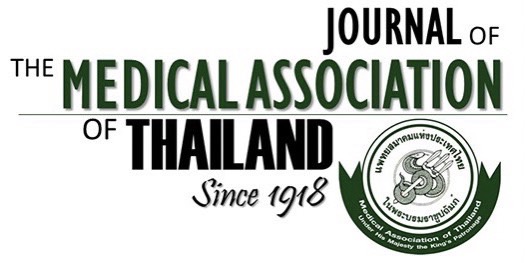The Efficacy and Effectiveness of Influenza Vaccination among Thai Elderly Persons Living in the Community+
Rungnirand Praditsuwan, MD*, Prasert Assantachai, MD, FRCP (London)**, Chantapong Wasi, MD***, Pilaipan Puthavatana, PhD***, Uraiwan Kositanont, MSc***
Affiliation : + This study was financially supported by the National Research Council of Thailand. Influenza vaccines used in this study were supported by Aventis Pasteur (Thailand) Ltd. * Department of Medicine, Faculty of Medcine, Siriraj Hospital, Mohidol University ** Department of Preventive and Social Medicine, Faculty of Medcine, Siriraj Hospital, Mohidol University *** Department of Microbiology, Faculty of Medcine, Siriraj Hospital, Mohidol University
Objective : To determine the efficacy and cost-effectiveness of influenza vaccination in the Thai elderly living
in an urban community.
Materials and Methods : The study design was a stratified, randomized, double blind, placebo-controlled trial.
A total of 635 participants aged 60 years and older living in an urban community was randomized to receive
an influenza vaccine or tetanus toxoid as a placebo injection. All participants were followed up 4-6 weeks in
the community for influenza-like illness and treatment received, hospitalization and death for one year. A
hemagglutination inhibition (HI) test for influenza virus antibody of all participants was done on the day of
vaccination as well as 1 month, 5 months, and 12 months after the vaccination. Main outcome measures were
immune response rate and protective titer, influenza-like illness, serological influenza, treatment received
for influenza-like illness and their expenses, hospitalization and death during the study period.
Results : The immune response rate of vaccinations was 97.1% and protective titer for A (H1N1) and A
(H3N2) strains were 96.4 and 98.6%, respectively. The incidence of influenza-like illness was 4.83% in the
vaccine group compared with 10.88% in the placebo group. The relative risk reduction was 56% (95%CI =
14 to 77%). The survival analysis also showed that vaccinations significantly reduced the incidence of
influenza (p = 0.009). The number needed to prevent one episode was 17 persons (95%CI = 9 to 71 persons).
The adverse reactions of vaccinations were mild and tolerable. However, the number of treatments received
for influenza-like illness and their cost were not significantly different between the two groups. None of the
subjects had pneumonia nor needed hospitalization during the study period. Seven participants died during
the year of follow up, but not from influenza.
Conclusion : In Thai elderly living in the community, influenza vaccination reduced the incidence of influenza-
like illness by half, but not the number of treatments received for influenza-like illness, their cost, and its
serious complications. In the year of the study, considering the cost of vaccines and the numbers needed to
prevent one episode of infection from the provider’s viewpoint, it may not be cost-effective to recommend that
all Thai older persons living in the community should receive influenza vaccination annually. Vaccination
recommendation for the elderly should be promptly implemented in expectation of a severe epidemic in
Thailand.
Keywords : Influenza, Vaccine, Elderly, Efficacy, Cost-effectiveness



